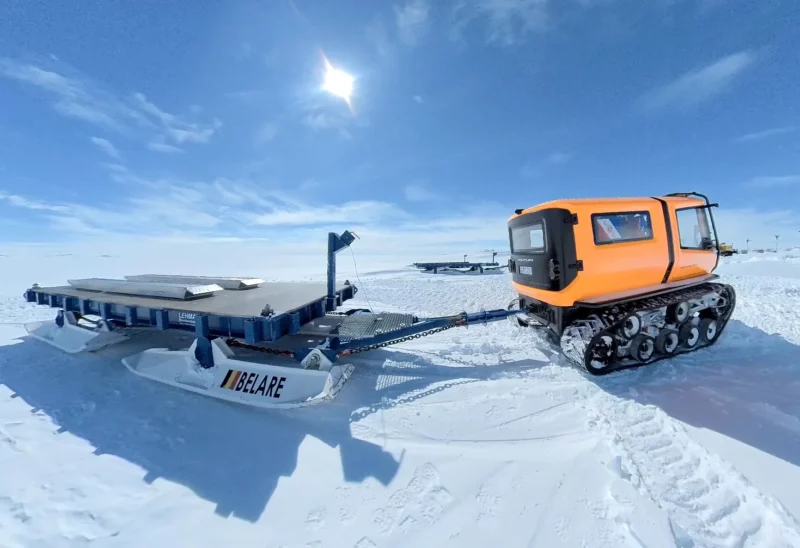this looks cool —
Venturi has added more cooling to cope with unexpectedly hot temperatures.

Enlarge / The Venturi Antarctica has been operating down south since late 2021.
Venturi
The Antarctic’s only electric exploration vehicle has received an upgrade for 2023. Called the Venturi Antarctica, it’s a bright-orange tracked vehicle that has been in service at Belgium’s Princess Elisabeth Antarctica Station since December 2021, allowing researchers there to travel around East Antarctica without belching hydrocarbon pollutants all over the place.
It’s 11.4-feet (3.4 m) long, 6.6-feet (2 m) wide, and 7.2-feet (2.2 m) tall, and it weighs 5,500 lbs (2.5 metric tons). The Antarctica’s tracks are powered by a pair of 80 hp (60 kW) electric motors, which are fed by a 52.6 kWh battery pack that gives the vehicle a range of 31 miles (50 km) in temperatures as low as -58˚F (-50˚C). For longer trips, it can fit a second pack to extend that range. So far, the Antarctica has about 310 miles (500 km) under its tracks.
Enlarge / Ars got its first glimpse of the Antarctica in 2016 during our visit to Venturi’s Monegasque HQ.
Elle Cayabyab Dash
The pod-like cabin also has room for equipment—it would be a pretty useless research vehicle if it didn’t—and it can carry up to six humans as well. Charging takes 2–18 hours, depending on the conditions, and the electricity comes from Princess Elisabeth Station’s wind and solar capacity.
However, the Antarctica needed some modifications for 2023. In essence, current temperatures are too high for the EV’s original design, with weather as balmy as 14˚F (-10˚C). There’s a new ventilation system to prevent the greenhouse-like interior from baking its occupants in the Antarctic sunshine, as well as additional cooling for the EV’s power electronics to dump that excess heat outside the vehicle.
Venturi also modified the Antarctica’s sprockets; the previous iterations collected snow as the tracks operated, which resulted in harsh vibrations. A further upgrade on the tracks is in the works—Venturi says that current snow conditions mean it’s only able to travel about 25 miles (40 km) on a charge.
Note: This article have been indexed to our site. We do not claim legitimacy, ownership or copyright of any of the content above. To see the article at original source Click Here







